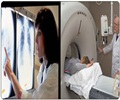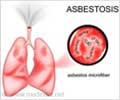DNA coughed up along with phlegm could point to lung cancer, say researchers.
DNA coughed up along with phlegm could point to lung cancer, say researchers at the University of Maryland School of Medicine who are developing an inexpensive and non-invasive gene probe to help diagnose early stage lung cancer in current and former smokers.
In the January 15 issue of Clinical Cancer Research, the researchers report that their fledgling test, designed to check whether two genes believed to be tumor suppressors are deleted in cells found in sputum, identified 76 percent of stage I lung cancer patients whose tumors also showed the same genetic loss. Existing sputum “cytology” tests, which look for changes in cell structure, identified only 47 percent of the patients, they say.While no other simple sputum analysis has found such a high correlation with lung cancer, it is not yet good enough for the clinic, researchers say, and so they are now expanding their test to screen for up to eight genes.
“There is an urgent need to develop reliable early diagnostic biomarkers for lung cancer that can be detected non-invasively, and these two genes look to be great candidate markers for such a test,” said Feng Jiang, M.D., Ph.D., assistant professor of pathology at the University of Maryland School of Medicine. “We need to validate our findings, of course, but we have shown that the genetic aberrations seen in sputum reflect the same genetic aberrations found in lung tumors, and that these molecular changes occur before any morphological changes can be seen in a cytology test.”
Sputum cytology is still used in some clinics, but has largely been found to be insensitive, Jiang said. For that reason, he and his collaborators have been working for years on a simple, effective way to detect changes in the genes of cells in the bronchial airway that signify early cancer is developing somewhere in the lung system. Many cells within the airway exhibit a similar pattern of genetic abnormalities that leads to lung cancer development, the researchers say, but the challenge is to find altered genes that are only predictive of cancer, and not just of general cellular damage from smoking.
“Most heavy smokers never develop lung cancer, even though cells in their airways show genetic damage,” Jiang said. “The trick is to find the genes that are only cancer related.”
The research group had previously identified a set of genes that were deleted in lung cancer tumors, and in this study, they tested three of them (HYAL2, FHIT, and SFTPC) in sputum samples taken from 38 patients with stage 1 non-small cell lung cancer, 36 cancer-free smokers and 28 healthy nonsmokers.
Advertisement
“As a diagnostic tool to identify early stage lung cancer patients who would then benefit most from curative therapies, FISH is very cheap and convenient,” Jiang said. “The technique may be also useful in monitoring lung cancer patients for response to treatment, disease progression and early evidence of relapse in the future.”
Advertisement
The false positive rate of about eight percent occurred because HYAL2 was found in sputum of four cancer-free smokers and FHIT deletions was found in three cancer-free smokers. However, the deletions were not found in the sputum of healthy non-smokers. “Those deletions in cancer-free smokers could represent an early indication that lung cancer is developing that has not yet been detected, but we won’t know that without longer follow-up study,” Jiang said.
Source-Newswise
SRM











